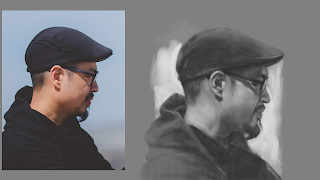Recently I've finally managed to find some time to pick up and read this book that so many visual storytellers and creatives have recommended. So far it has been a really insightful and informative read with great easily digestible examples of what you need when creating a film.
The key elements I took away from the first few paragraphs in the introduction is that now anyone can shoot a film with their phones and camera as technology has become more accessible and affordable as well as user friendly with high quality editing software etc. It is also much easier to learn specialized skills in film making with the aid of the internet and affordable learning.
In the same chapter the author address some key influential directors too such as: Griffith, Welles, Godard, Kurosawa and Wes Anderson just to name a few. Few of these names I have heard of and have watched their master pieces, however I am yet to discover more formidable influential directors that have made a mark in the art of film making today.
The next section of the book addresses the importance of the Visualization process, it is noted that a film enables the audience with the feeling of being present that photography or a painting cant provide. Through the visual arrangement of perspective and movement of camera. During the visualization stage the author does express the importance of being open minded during the filming and to be prepared to change and deviate from any initial storyboards or key frames. He then gives an insight to the role of a production designer and art director with clear description of their main differences during production.
Mise-en-scene is a term that I'm quite familiar with due to my earlier studies in visual communication and media in school. The initial idea that I believe it signifies is the overall design of a scene or set with a clear communication of what mood or atmosphere the visual director wants in the shot.
It stated that the Production designer does have more of a comprehensive role than that of an Art director as they are more involved with the overall shot and flow of each scene and how the scenes is visually composed. Where as the art director will often manage the art team to come up with visual concepts for director. Gone with the wind seems to have had an influential part in the development of this role and the position of production designer has continued to be a significant role in production till this day.
Following that the next section describes the role of the Look dev team and what their significant roles are. The teams is commonly divided into three groups, Concept Art, Plans, Elevation and Projection and finally the Storyboards and previz. There is mention of key influential production artists such as Ralph Mcquarrie and Craig Mullins who are my absolute idols when it comes to concept art and world building, along with many other great designers out there who have been a huge influence on my work.
Anyway that concludes of how much I have manage to get up to so far and with that I end this post here and continue to read on and hopefully update these entries as I intern new information.























